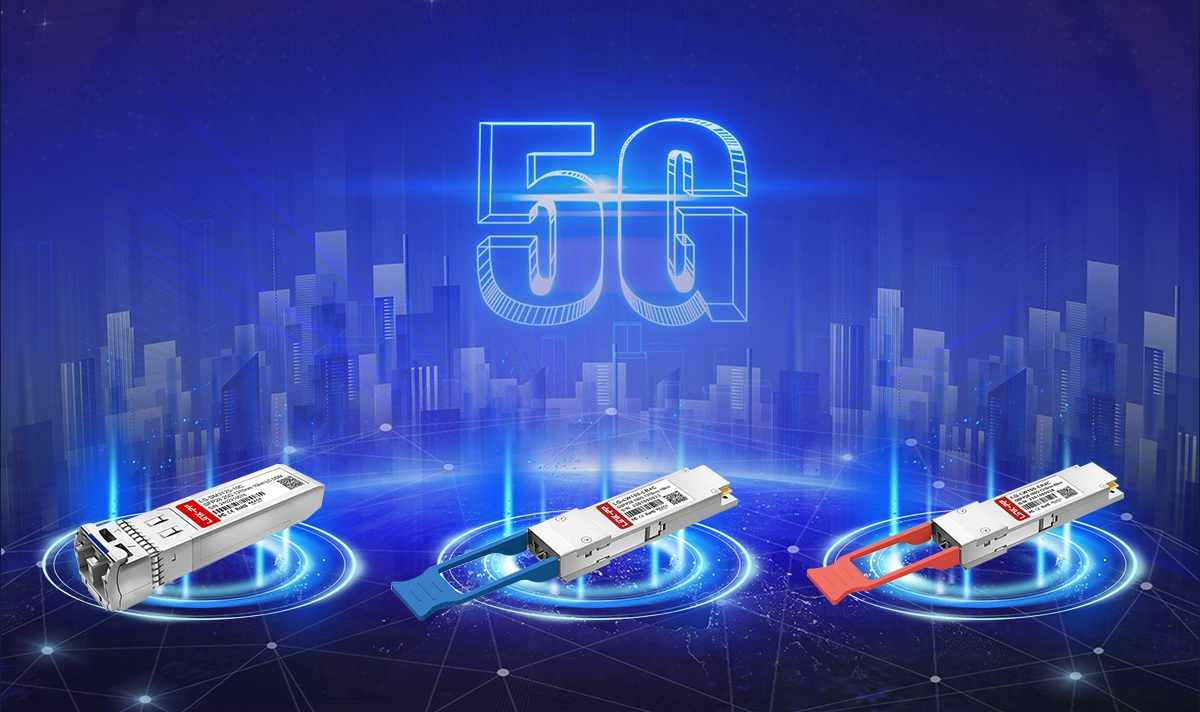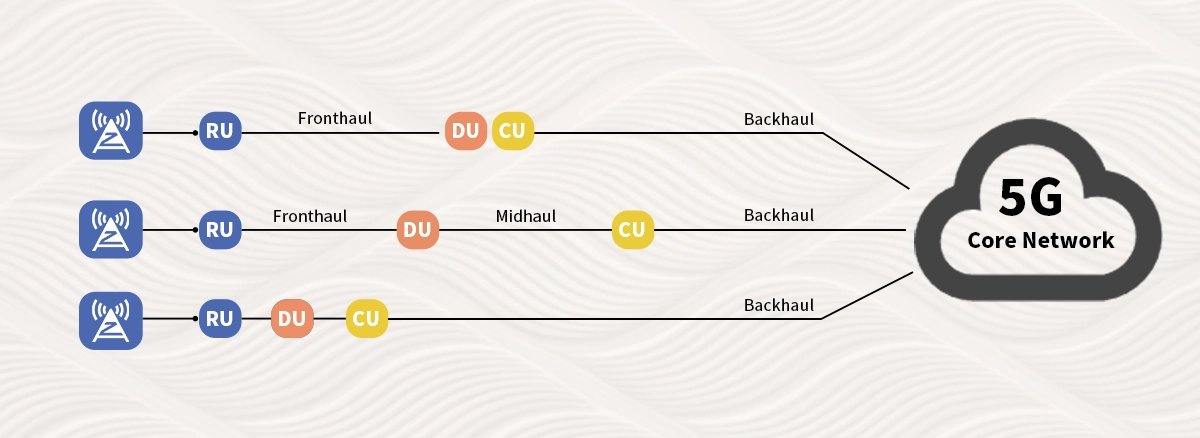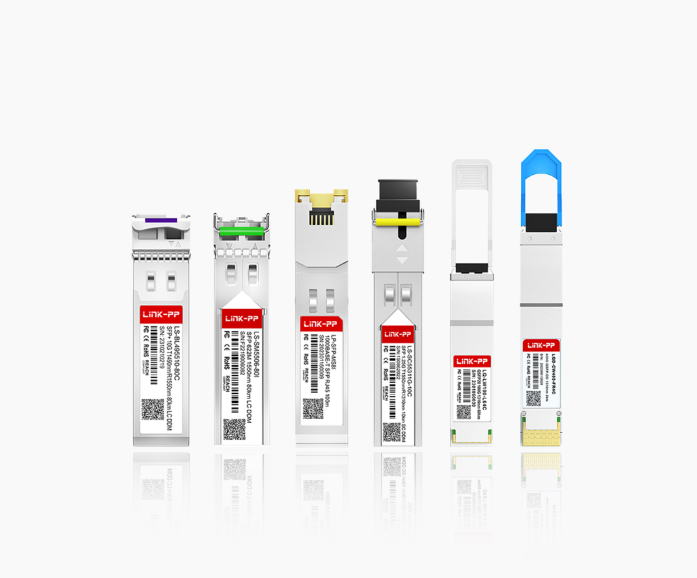
The rollout of fifth-generation (5G) wireless technology promises revolutionary speeds, ultra-low latency, and massive device connectivity. Yet, this transformative power relies heavily on an often-overlooked hero within the network infrastructure: the optical transceiver. These compact modules are the indispensable workhorses converting electrical signals into light and back again, forming the high-speed backbone connecting 5G radios, baseband units, and core networks. Understanding their application is key to building robust, future-proof 5G networks.
❒ Key Takeaways
Optical modules change electrical signals into light. This helps send data quickly through fiber optic cables. It makes 5G connections fast and steady.
Different optical modules can work at speeds from 10G to 100G. This helps 5G networks support more people and more data at once.
Optical modules help lower delay in 5G. This means games, video calls, and new tech like self-driving cars can react fast.
These modules are used in important 5G areas like fronthaul, backhaul, data centers, and all-optical access. They help keep your connection strong and stable.
Optical networks give high speed, save energy, and are easy to upgrade. But they need good planning to control costs and work in hard places.
❒ Why 5G Places Unprecedented Demands on Network Infrastructure
5G is not merely an incremental upgrade. Its core promises necessitate fundamental changes:
Enhanced Mobile Broadband (eMBB): Delivering multi-gigabit speeds to users requires exponentially more bandwidth in the transport network.
Ultra-Reliable Low Latency Communications (URLLC): Applications like autonomous vehicles and industrial automation demand sub-millisecond latency, requiring shorter physical paths and faster signal conversion.
Massive Machine-Type Communications (mMTC): Connecting vast numbers of Internet of Things (IoT) sensors necessitates highly scalable and dense network architectures.
Traditional copper-based solutions simply cannot meet these stringent requirements for speed, reach, and immunity to electromagnetic interference. This is where fiber optics, enabled by high-performance optical transceivers, becomes non-negotiable.
❒ Optical Transceivers: The Engine of 5G Transport
Optical transceivers serve as the critical interface points where the network's electrical domain meets the optical fiber domain. In the context of 5G's disaggregated Radio Access Network (RAN) architecture, their role is paramount across key segments:

Fronthaul: Connects the Remote Radio Unit (RRU) or Active Antenna Unit (AAU) at the cell site to the Distributed Unit (DU). This link demands the highest bandwidth and lowest latency, often requiring CPRI (Common Public Radio Interface) or its evolved, more efficient successors like eCPRI or RoE (Radio over Ethernet). Reliable optical transceiver for 5G base stations are essential here.
Midhaul: Connects the DU to the Centralized Unit (CU). This segment aggregates traffic from multiple DUs and requires significant bandwidth and moderate latency.
Backhaul: Connects the CU(s) to the 5G Core network. This is the traditional aggregation layer, requiring the highest capacity links to handle consolidated traffic.
Key Technical Requirements for 5G Optical Transceivers

Selecting the right optical transceiver module for 5G deployment involves careful consideration of several critical factors:
Data Rate: Must match the specific link requirement (e.g., 25G for many eCPRI fronthaul links, 100G/200G/400G for midhaul and backhaul aggregation).
Form Factor: Must fit the host equipment (switch, router, gateway). Common choices include SFP28 (25G), QSFP28 (100G), QSFP-DD (200G/400G), and OSFP (400G+).
Reach: Determined by the distance between nodes (Short Reach - SR: <500m, Long Reach - LR: ~10km, Extended Reach - ER/ZR: 40km+).
Wavelength: Different wavelengths (e.g., 850nm for multimode SR, 1310nm or 1550nm for single-mode LR/ER/ZR) are used depending on fiber type and distance.
Power Consumption: Crucial for cell site efficiency and thermal management, especially in dense deployments.
Temperature Range: Must operate reliably in harsh outdoor environments (Industrial Temperature Range: -40°C to +85°C).
Protocol Support: Compatibility with relevant standards (eCPRI, Ethernet, OTN).
5G Optical Transceiver Applications: Matching the Module to the Task
5G Network Segment | Key Requirements | Typical Optical Transceiver Solutions | Example Application Focus |
|---|---|---|---|
Fronthaul | Ultra-low latency, 10G/25G/50G/100G, CPRI/eCPRI/RoE, Industrial Temp | SFP28 (25G), QSFP28 (100G), SFP56 (50G) | High-speed optical module for 5G fronthaul connecting AAU to DU |
Midhaul | Moderate latency, 100G/200G/400G, Ethernet/IP | QSFP28 (100G), QSFP-DD (200G/400G) | Aggregating DU traffic towards CU |
Backhaul | High Capacity, 100G/200G/400G+, Ethernet/OTN | QSFP-DD (400G), OSFP (800G), CFP2-DCO | Connecting CU to 5G Core; Optical transceiver solutions for 5G backhaul |
❒ Why Quality Matters: The LINK-PP Advantage in 5G Connectivity
In an environment demanding maximum uptime and performance, choosing proven, high-quality optical transceiver modules is critical. Generic or substandard modules can lead to network instability, increased latency, higher bit error rates (BER), and costly field failures. This is where LINK-PP stands out.
LINK-PP specializes in designing and manufacturing robust, high-performance optical transceiver products specifically engineered to meet the rigorous demands of modern telecommunications, including 5G. Our modules undergo stringent testing to ensure reliability over wide temperature ranges and long operational lifetimes.
LINK-PP Solutions Powering 5G Networks:
Fronthaul Champion: The LS-MM8525-S1C is an industry-leading durable SFP28 transceiver optimized for short-reach 5G fronthaul links. Operating at 25 gigabits per second over multimode fiber (MMF) up to 100m, it delivers the low latency and high reliability essential for connecting AAUs/RRUs to DUs, even in demanding outdoor cabinet environments. Its industrial temperature range (-40°C to +85°C) ensures consistent performance. Request samples ↷
Midhaul/Backhaul Workhorse: For higher capacity aggregation in midhaul and backhaul, the LQ-LW100-LR4C provides a robust solution. This long-range optical transceiver transmits 100 gigabits per second over single-mode fiber (SMF) up to 10km using four wavelengths (LWDM). It's ideal for cost-effectively scaling bandwidth between DUs, CUs, and the core network. *Looking for higher density? Ask about our QSFP-DD and OSFP solutions for 200G, 400G, and beyond!*
Technical Specifications Comparison for Key LINK-PP 5G Modules
Feature | LS-MM8525-S1C (Fronthaul Focus) | LQ-LW100-LR4C (Mid/Backhaul Focus) |
|---|---|---|
Data Rate | 25 Gigabits per second | 100 Gigabits per second |
Form Factor | SFP28 | QSFP28 |
Reach | 100m (OM4 MMF) | 10km (SMF) |
Wavelength | 850nm | 4x LAN-WDM (1295nm, 1300nm, 1304nm, 1309nm) |
Fiber Type | Multimode (OM3/OM4) | Single-Mode (OS2) |
Max Power Consumption | < 1.0 Watt | < 3.5 Watts |
Operating Temperature | -40°C to +85°C (Industrial) | 0°C to 70°C (Commercial) / -40°C to +85°C (Industrial Option) |
Key Applications | 5G Fronthaul (eCPRI), Short-Reach Links | 5G Midhaul, Backhaul, Data Center Interconnect |
Protocols | Ethernet, CPRI, eCPRI, RoE | Ethernet, OTU4 |
❒ The Future: Coherent Optics and Beyond
As 5G evolves towards even higher capacities (think 6G aspirations) and network densification continues, optical transceiver technology must advance. Coherent optics, traditionally used in long-haul transport, is now making its way into shorter reaches like metro and even advanced backhaul, offering superior performance and spectral efficiency at 400G, 800G, and higher speeds using technologies like QSFP-DD and OSFP form factors. Pluggable coherent modules will be crucial for scaling future 5G-Advanced and 6G networks.
❒ Conclusion: Investing in the Foundation
Optical transceivers are not merely components; they are the fundamental enablers of the high-speed, low-latency connectivity that defines 5G. Choosing the right high-quality optical module for 5G infrastructure – matching data rate, reach, form factor, environmental specs, and quality – is paramount for network performance, reliability, and total cost of ownership.
Ready to optimize your 5G transport network?
LINK-PP provides a comprehensive portfolio of high-performance, reliable optical transceiver solutions designed specifically for the demands of modern 5G deployments. From robust fronthaul SFP28 to high-capacity QSFP28 and next-generation coherent modules, we have the technology to future-proof your investment.
Explore our 5G optical transceiver solutions today!
See Also
Understanding TOSA Technology and Its Role in Optical Modules
Exploring Erbium-Doped Fiber Amplifiers and Their Network Uses
A Guide to WDM Technology and Its Optical Network Applications




